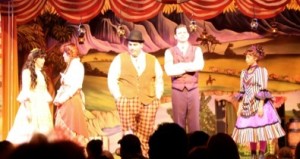
I recently wrote about designing an experience being like ‘The Whole Show’ for a theater production. All of the elements must come together for someone to have the experience you are creating.
I have been thinking about how you measure and improve the extended experience. A while back, I wrote about creating an experience score card in ‘Measuring Experience Design’. In a score card, there are four measurement parts: the overall sense of customer satisfaction, process improvement, financial success, and employee development.
In the score card, I mentioned NetPromoter as a way to measure satisfaction. People who are satisfied with your product are willing to recommend it to others. That helps generate success for the product or experience. This is one good measurement. But, is it sufficient?
In a play, you can hear the audience clap, cheer, boo or otherwise respond to the production. There are ways to listen to customer reactions in other situations, too. For example, during an experience, do your customers tweet Love or Hate messages? What are people saying to your support reps in addition to asking their questions? Do your customers Cheer or Boo you on Facebook? It might be a little more remote than an audience in the theater – but they are likely responding to and commenting on the experiences you deliver. Are you able to hear them?
There are other types of measurement that might also be useful. For example, many product can now measure how much someone is interacting with a product. For example, with Web Analytics, you can track how many pages are viewed and how long someone spent on a web site. However, you have to think about what that time means? Spending more time with something could be a positive – the customer enjoys it and wants more. Or, it could be a negative – more time spent with a product could mean there are problems and the customer is spending time troubleshooting and fixing the product.
Another measurement that might be used for the theater is the sale of related products. If you enjoy a play, you might like to buy the t-shirt, hat, program, or CD that goes with it. For the products and experiences you deliver, are people buying the t-shirts you make or do you have to give them away?
What is your strategy for measuring the whole experience? Have you tried anything out of the ordinary? Let me know how your approach has worked by leaving a comment.
Copyright 2011. All Rights Reserved.
